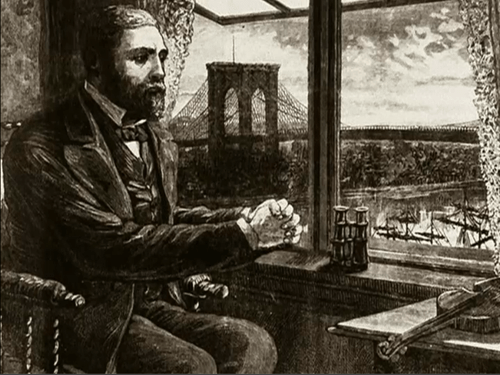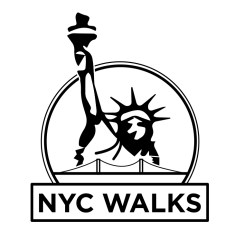Builder of the Brooklyn Bridge: Washington August Roebling, the Son Part 2

Dredging was completed in the spring of 1870. A caisson, designed by the Roeblings and the largest ever built, was used to build the Brooklyn Tower. Imagine a submarine open at the bottom. It sinks as the mud is dug out through a series of pressure chambers. At the same time, construction of the tower is begun on top of the submarine. Once the submarine hits bedrock, it is filled with concrete. This then becomes the solid foundation for the tower.
 Cabling the Bridge 8
Cabling the Bridge 8
Like his father, Washington worked closely with the men and shared their hardships and dangers. The air inside the caisson was stuffy. Temperatures reached over 100 degrees. The bends was a great hazard. Since its medical cause was not yet understood, it posed a great danger. As the men went deeper, nitrogen would accumulate in the blood. If they went up too fast without allowing time for decompression, nitrogen bubbles would disrupt the body. There were casualties among the workmen. Washington got the bends for the first time when he saved the Brooklyn caisson when it caught fire in December 1871. The Brooklyn caisson reached a depth of 45 feet, equal to five stories, before hitting bedrock. This is also known as “Manhattan schist,” the ideal foundation for skyscrapers.
 Cabling the Bridge 9
Cabling the Bridge 9
NYC Walks Blog 25 Builder of the Brooklyn Bridge: Washington August Roebling, the Son Part 2 © 2018 by Dr. Philip Ernest Schoenberg
